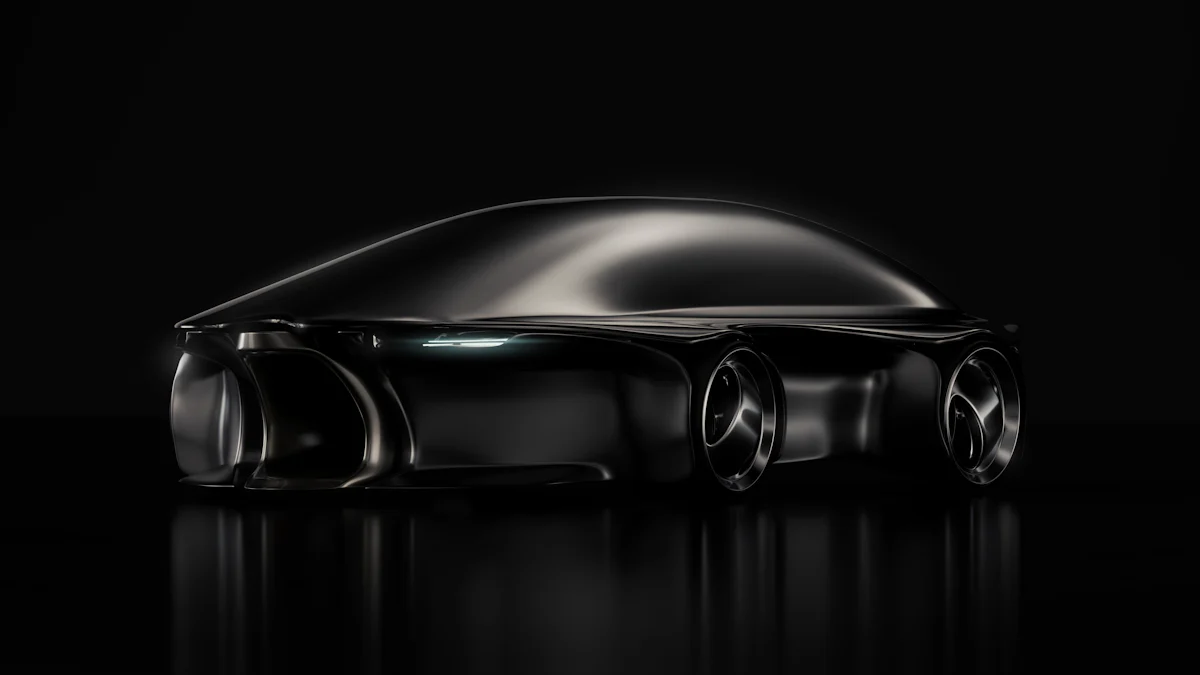Are You Ready for the Revolution in Transport Technology?

Imagine a world where transport technology isn't just about getting from point A to B; it's a gateway to a whole new era of possibilities. From electric vehicles silently gliding down streets to autonomous drones delivering packages at your doorstep, the future of transport technology is here, and it's revolutionizing the way we move. Buckle up as we take you on a ride through the rapid advancements shaping our tomorrow.
The Rise of Transport Technology

In the realm of transport technology, innovation has been a driving force since ancient times. Consider the pivotal moment when the wheel was invented around 3500 BCE. This ingenious creation unlocked new possibilities, enabling the development of wheeled vehicles that expanded transportation capabilities far and wide.
Fast forward to the 18th century, a time marked by another groundbreaking invention: the steam engine. This marvel not only revolutionized maritime travel but also enhanced railway transportation performance, shaping the course of history with its impact.
Through these historical milestones, humanity's ability to traverse vast distances and connect distant lands was forever transformed. Each advancement in transport technology brought us closer together, allowing for unprecedented mobility and influence over expansive territories.
Delving into the annals of history, we uncover remarkable feats such as the colonization of Australia by sea approximately 60,000–40,000 years ago. These early seafaring voyages represent humanity's first forays into maritime exploration, laying the foundation for future nautical endeavors.
Archaeological findings further attest to the widespread adoption of wheeled vehicles across regions like Mesopotamia, Northern Caucuses, and Central Europe following the invention of the wheel. These discoveries serve as tangible evidence of how technological innovations in transportation have shaped civilizations throughout time.
As we reflect on these transformative events, it becomes evident that each leap forward in transport technology has propelled us towards a future where boundaries are blurred, and connectivity knows no limits.
Cutting-Edge Innovations
Maglev Trains
In the realm of transport technology, one standout innovation that has captured the imagination of engineers and commuters alike is the revolutionary Maglev Trains. These trains, propelled by magnetic levitation, offer a glimpse into a future where speed and efficiency harmonize seamlessly.
How Maglev Works
Picture this: as you board a Maglev Train, you are stepping onto a marvel of engineering ingenuity. Unlike traditional trains that rely on wheels, Maglev Trains float above the tracks through powerful magnets. These magnets create an electromagnetic field that propels the train forward with minimal friction, resulting in a smooth and silent journey.
To put it simply, Maglev Trains operate on the principle of magnetic repulsion. As the train's electromagnets interact with the guideway's magnets, they generate a lift force that elevates the train off the tracks. This lack of physical contact allows for speeds exceeding 300 miles per hour, offering passengers a thrilling experience akin to gliding through the air.
Benefits of Maglev
The allure of Maglev Trains extends beyond their speed capabilities. By eliminating wheel-to-rail contact, these trains reduce wear and tear on infrastructure, leading to lower maintenance costs in the long run. Additionally, their swift acceleration and deceleration make them ideal for urban environments where efficiency is paramount.
Furthermore, envision a future where underground maglev networks redefine freight transportation. Companies like Mole Solutions advocate for subterranean maglev systems dedicated to cargo transport. These underground mini-trains promise cost-effective operations while minimizing environmental impact—a win-win scenario for both businesses and sustainability advocates.
Delivery Drones
As we navigate the landscape of modern transportation innovations, another player emerges on the scene: Delivery Drones. These unmanned aerial vehicles are poised to revolutionize last-mile logistics, offering swift and efficient delivery solutions that transcend traditional constraints.
Current Applications
Currently, Delivery Drones are making waves in various industries, from e-commerce giants to emergency response teams. Companies like Amazon are exploring drone delivery services to expedite package drop-offs, especially in remote or congested areas where conventional vehicles face challenges.
Moreover, drones have found utility beyond commercial realms; they play crucial roles in disaster relief efforts by delivering medical supplies and aid to inaccessible regions swiftly. Their agility and versatility make them invaluable assets in times of crisis when every second counts.
Future Potential
Looking ahead, the potential applications of Delivery Drones seem boundless. Imagine a world where drones facilitate rapid medical deliveries to remote communities or provide real-time assistance during natural disasters. The sky is no longer the limit; it's a realm brimming with possibilities waiting to be explored.
Future Trends

Hyperloop
In the realm of transport technology, a groundbreaking innovation on the horizon is the revolutionary Hyperloop. This futuristic mode of transportation promises to redefine intercity travel, offering unparalleled speed and efficiency for passengers seeking swift connections between distant destinations.
Technology and Testing
The Hyperloop concept envisions a system where pods travel through vacuum tubes at incredible speeds, propelled by magnetic levitation and linear induction motors. This cutting-edge technology aims to revolutionize long-distance travel by significantly reducing transit times and enhancing overall accessibility.
As researchers delve into the feasibility of the Hyperloop, studies reveal promising insights into its potential impact on future transport systems. NASA's conceptual feasibility study highlights the system's high-speed capabilities, emphasizing its ability to improve intercity accessibility and connect disparate regions seamlessly.
Moreover, ongoing testing and development efforts underscore the commitment to realizing the full potential of the Hyperloop. By pushing the boundaries of traditional transportation norms, this innovative mode of travel holds immense promise for transforming how we navigate vast distances in record time.
Government Support
One key factor driving the advancement of the Hyperloop is government support and collaboration with private entities. As policymakers recognize the transformative potential of this technology, initiatives are underway to foster research, development, and implementation of Hyperloop networks on a global scale.
In a bid to enhance national connectivity and reduce carbon emissions, governments are increasingly investing in sustainable transport solutions like the Hyperloop. The integration of clean energy sources into power grids is crucial for maximizing environmental benefits and ensuring net savings over conventional modes of transport.
With strategic partnerships between public institutions and private enterprises, the vision of a hyper-connected world powered by high-speed transit systems is steadily becoming a reality. As nations embrace this innovative approach to transportation, a new era of mobility dawns on the horizon, promising unparalleled convenience and efficiency for all travelers.
Carbon-Neutral Transport
Another pivotal trend shaping the future of transport technology is the shift towards carbon-neutral solutions that prioritize sustainability and environmental stewardship. As concerns over climate change escalate, industries worldwide are reimagining their approaches to transportation to minimize carbon emissions and mitigate ecological impact.
Importance of Zero-Emissions
The imperative for achieving zero-emissions in transport cannot be overstated. With traditional modes of transportation contributing significantly to greenhouse gas emissions, transitioning towards carbon-neutral alternatives is essential for combating climate change and safeguarding our planet's future.
Studies underscore the critical role that carbon intensity plays in determining the environmental footprint of transport technologies. By prioritizing clean energy sources such as solar or wind power, vehicles can operate more sustainably while reducing their overall carbon impact per passenger-km traveled.
Emerging Solutions
In response to mounting environmental challenges, innovators are spearheading a wave of emerging solutions aimed at revolutionizing how we think about transport. From electric vehicles powered by renewable energy sources to hydrogen-powered trains that emit only water vapor, these cutting-edge technologies offer glimpses into a greener, more sustainable future.
By embracing these innovative solutions and advocating for policies that support their widespread adoption, we can pave the way for a more environmentally conscious approach to mobility. As consumers demand cleaner transportation options and governments prioritize sustainability goals, a paradigm shift towards carbon-neutral transport becomes not just desirable but imperative for creating a healthier planet for generations to come.
In the realm of transport technology, innovation is the driving force behind a revolution in how we move. Embracing technology and investing in innovation can create a future where transport is safe, sustainable, and accessible to all. Stay informed, be part of the journey, and witness firsthand the transformative power of advancements in transport technology.
See Also
Exploring Future Innovations in Logistics Technology
2024 Sea Freight Logistics Innovations Revealed
Transforming Supply Chain with Innovative Logistics
